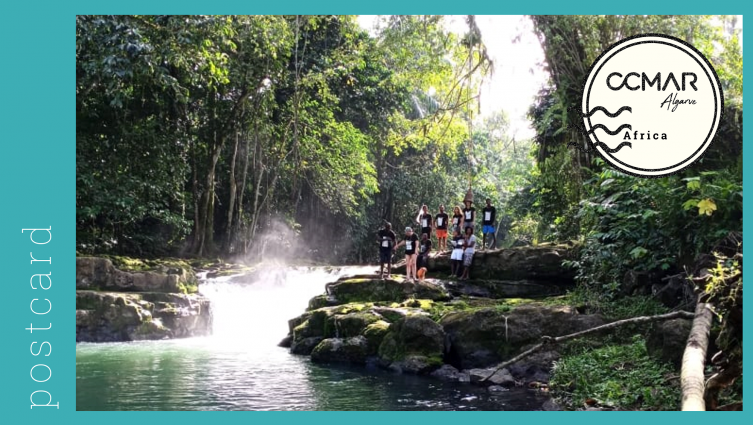We went to São Tomé and Príncipe on an important mission!
It is urgent to capacitate local communities with appropriate marine biodiversity management tools to achieve sustainable growth of the economy (blue growth), ensure sustainability of fisheries and conservation of threatened species, and adaptation to global changes.
Our researchers Vânia Baptista and Alexandra Teodósio went to São Tomé e Príncipe, where they presented the LittleFish-STP project (funded by Aga Khan Development Network and Fundação para a Ciência e Tecnologia) to partners, local communities, government, and non-governmental organizations.
Why did we go to São Tomé e Príncipe to present our LittleFish-STP project?
One of the major priorities of the presented project is to produce results that could have a meaningful impact on the African Tropical islands and be applicable in developing countries and regions, regarding conservation management measures of the potentially threatened species. In this case, the project focuses on the little fish (Sicydium bustamantei) an endemic species (species that occurs only in a certain geographical area or region) of the islands of the Guinea Gulf islands. The little fish is an important fishery resource of São Tomé and Príncipe, where there is a scarcity of knowledge about the biology, ecology, life cycle and fisheries of this species.
The project aims to use the little fish case study as a big example for similar goby fry fisheries in other tropical islands. In addition, we also intend to use these resources to develop capacity building actions for local populations on alternative marine resources using biodiversity studies, assessment of aquatic habitat quality and conservation management measures in nearshore and riverine-waterfall areas.
Introducing the project to partners, local communities, government and non-governmental organizations
During our visit, we organized the kickoff meeting of the LittleFish-STP Project. Our objective was to present the project to local institutions, Government, Non-Governmental Organizations, local communities, and fishermen. With the collaboration of the University of São Tomé e Príncipe and the NGO Mar Ambiente e Pesca Artesanal (MARAPA), we developed the sampling strategies for the next year. In addition, we also visited different freshwater and estuarine habitats to define the sampling sites in the rivers of São Tomé Island and the starting dates of field trips to collect data.
We also had the opportunity to meet with the several partners of the project: Direção das Pescas, Ministério da Agricultura e Pescas, Programa Tatô, communities of fishermen, sellers, and residents in areas where the ‘peixinho’ is fished.
Our big goal: develop intensive courses in São Tomé and Príncipe for students, researchers, technicians, and local communities
We, researchers from CCMAR and the University of Algarve, will expand existing initiatives and ongoing collaborations to lead scientific and technical capacity building at the University of São Tomé and Príncipe and at the NGO MARAPA. CCMAR researchers that are part of the project team will participate in several field campaigns in São Tomé Island and develop several intensive courses for students, researchers, technicians, and local communities.
In the next three years, several surveys to study marine biodiversity and ecosystem function in several rivers and coastal areas in São Tomé e Príncipe will be carried out and coordinated by CCMAR. This project also intended to integrate the Collaborative Centre of Excellence in Marine Sciences in Africa (CCEMAR) already under development throughout the Luandawaterfront project (coordinated by CCMAR).







